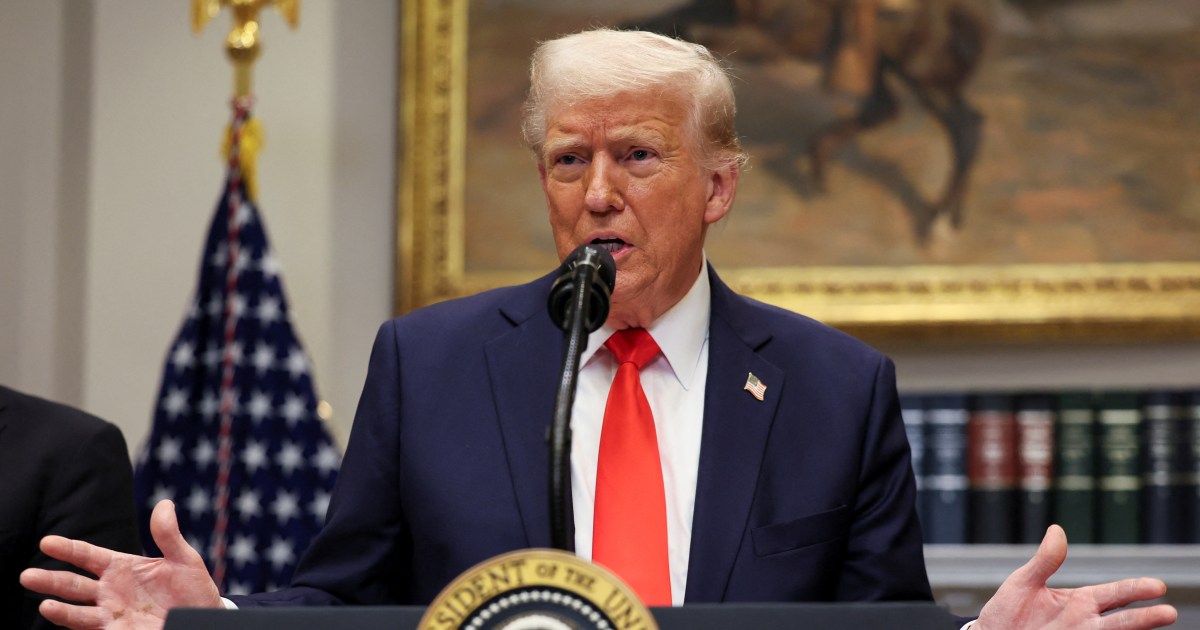Donald Trump, president of the United States, has threatened to impose tariffs of up to 300 percent on imported semiconductors, with exemptions for foreign businesses that pledge to make US products.
Trump has cast the proposed tariff as a means of attracting foreign investment, but experts warn that it could also stifle global supply chains and even penalize US-based businesses.
What specifics of Trump’s strategy are there?
Since Trump made plans for a 100 percent tariff at a White House event on August 7 and few details have been made public, few things have changed.
Companies that build research or manufacturing facilities in the US would receive exemptions, according to the US president, but tariffs could be applied retroactively if they didn’t make the planned investments.
Trump told reporters, “You have to pay, and that’s a guarantee, if you say you’re building, and you don’t build, then we go back, and we add it, it accumulates, and we charge you at a later date, and that’s a reason.”
Trump told reporters on Air Force One on Friday that more details would be revealed soon and that the tariff could be much higher than previously anticipated.
Trump said while traveling to Alaska to meet with Russian President Vladimir Putin, “I’ll be setting tariffs next week and the week after, on steel and on, I’d say chips – chips and semiconductors, we’ll be setting tariffs sometime next week or the week after.”
He continued, “I’m going to have a rate of 200 to 300 percent.”
Trump wants to impose tariffs on imports of chips, but why?
G Dan Hutcheson, the vice chair of Canada’s TechInsights, stated that Trump wants to impose a tariff on chips for a number of reasons, but the main one being to re-shore investment and manufacturing to the US.
The main objective is to eliminate the US manufacturing industry’s cost disadvantage and gain a competitive advantage. According to Hutcheson, the focus is primarily on businesses that don’t make US investments.
“Entities that align with his goal of restoring manufacturing to the US can negotiate exceptions.”
In general, the tariff is intended to strengthen Washington’s standing in its ongoing conflict with China, another chip-making powerhouse, and address US dependence on imported semiconductors.
In the US, both issues are bipartisan issues.
The Trump administration also launched a Section 301 and Section 232 investigation into the implications of US dependence on imported and finished goods made of foreign chips for alleged unfair trade practices in China’s semiconductor industry.
Who will be affected by the tariff?
The tariff would likely not have an impact on foreign tech companies that have already made investments in the US, including Samsung and Taiwan Semiconductor Manufacturing Company (TSMC).
It is unclear how the measure might impact other businesses, including those that manufacture chips in China, where both US and Chinese regulators prevent US investment.
The US may use the tariff as leverage as it negotiates the price of its so-called “reciprocal tariffs” against China, according to Yongwook Ryu, an assistant professor at Singapore’s Lee Kuan Yew School of Public Policy.
Since August 7, the US has been imposing blanket tariffs of 10 to 40% on the majority of trade partners, but Beijing’s negotiators are still working on a comprehensive trade agreement.
According to Ryu, “the reciprocal tariffs are typically aimed more at addressing the US trade deficit problem and re-shoring manufacturing back to the US,” but product-specific or sectoral tariffs [like semiconductors] are aimed more at achieving the strategic goal of stabilizing US technological hegemony and containing China,” Ryu said.
How much do US chip imports cost annually?
According to a report from the American Enterprise Institute, which uses UN trade data, the US imported about $40 billion worth of chips in 2024.
Although imports primarily came from Taiwan, Malaysia, Israel, South Korea, Ireland, Vietnam, Costa Rica, Mexico, and China, experts claim that this information does not accurately represent chip flows into and out of the US.
Chips can be added to finished goods as they are manufactured, packaged, or transported across borders.
According to Chris Miller, the author of Chip War: The Fight for the World’s Most Important Technology, another $50 billion worth of chips came into the US in 2024 via products like smartphones, auto parts, and home appliances imported from nations like China and Vietnam.
According to Miller, “a significant portion” of US chip imports are produced in the US before being packaged overseas for packaging, which is a labor-intensive process, before being re-imported.
According to Miller, “Many of the chips imported from important trading partners like Mexico, Malaysia, and Costa Rica are likely actually made by US companies like Texas Instruments and Intel, who both have US manufacturing but frequently have test and assembly facilities overseas,” Miller said.
Why does the global chip industry worry about tariffs?
Trump’s tariff proposals have added more uncertainty to a sector that is already grappling with his administration’s extensive efforts to reorganize global trade.
There isn’t really any guidance on how to effectively enforce these tariffs, according to Nick Marro, the lead analyst for global trade at the Economist Intelligence Unit.
The White House has not yet provided specifics about whether chips used in finished goods and those produced in the US will be subject to the tariff.
The fallout would be felt in industries like electronics, home appliances, cars, and auto parts if the latter were included in the tariff plans.  ,
According to Miller, consumers in the US and other countries would be the ones who would be most affected by the tariff.  ,
Source: Aljazeera

Leave a Reply